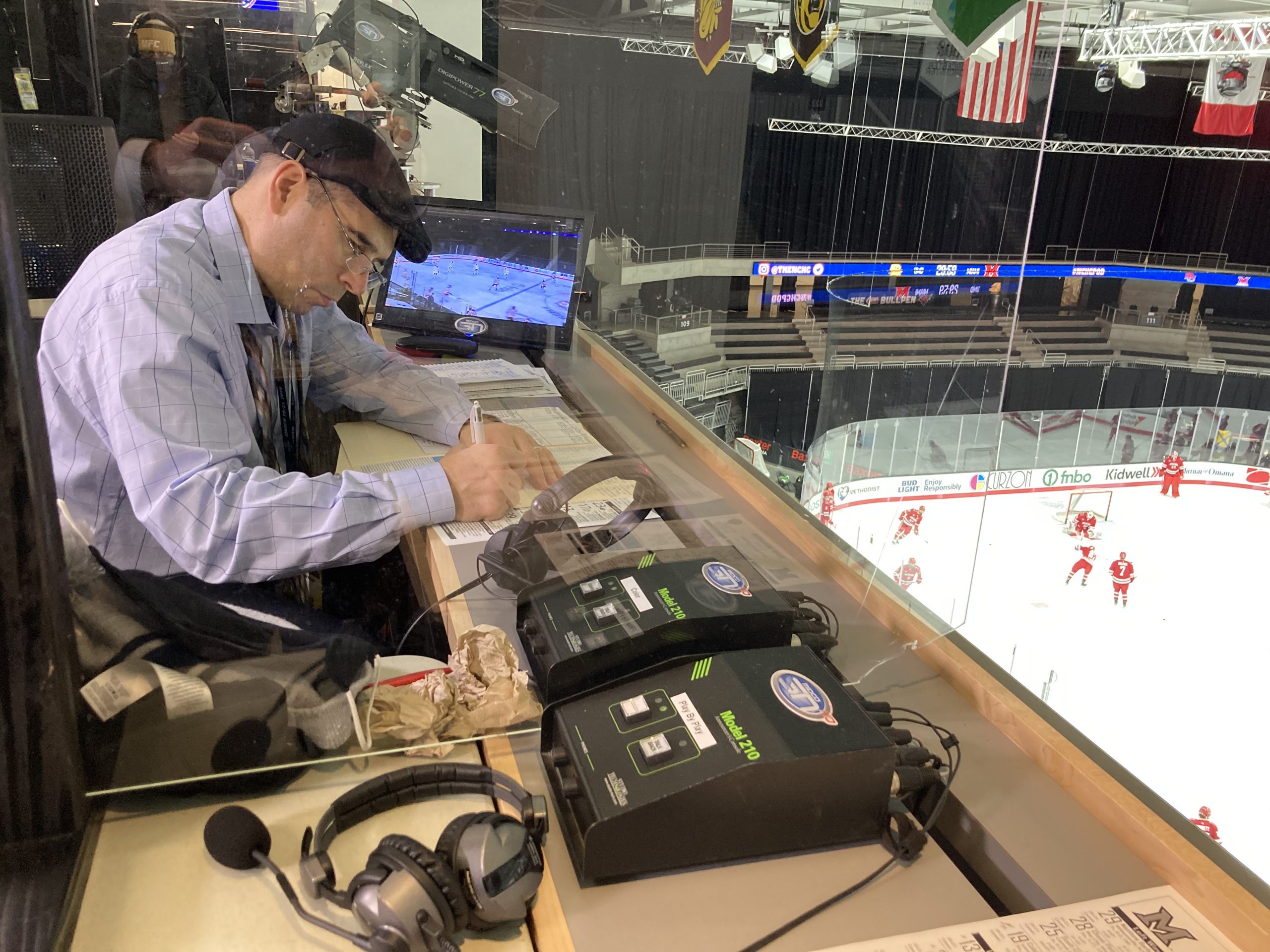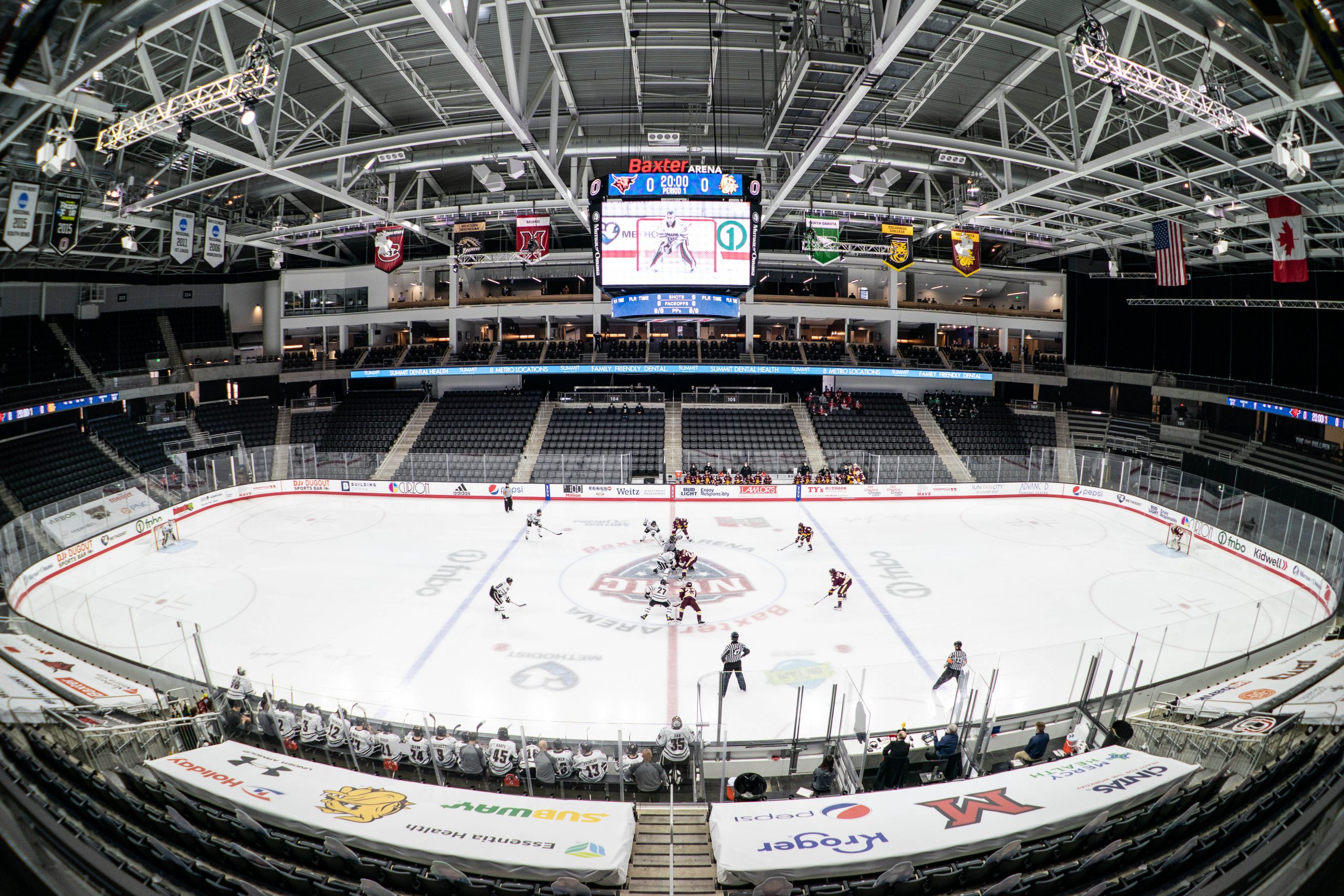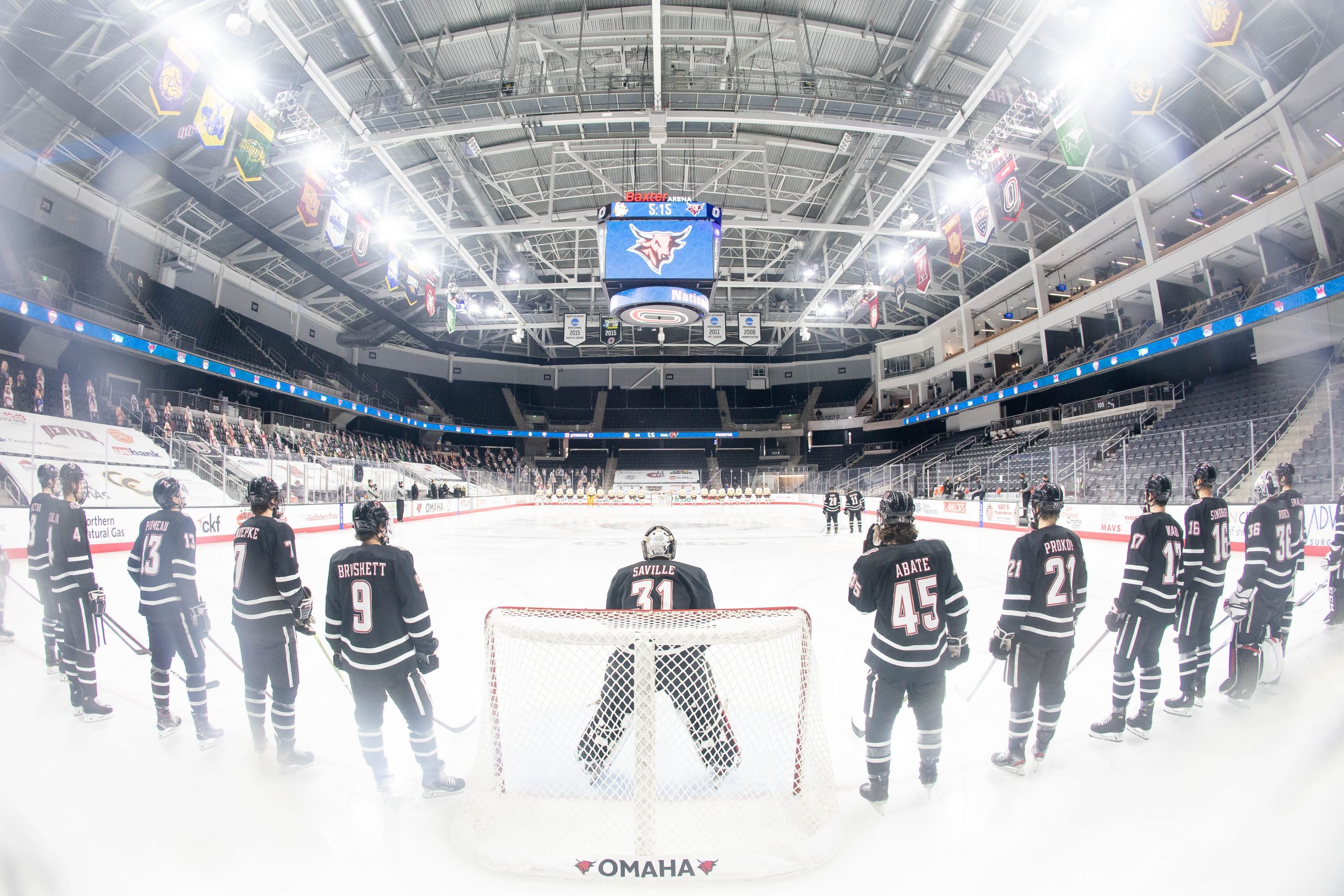Despite Pandemic Challenges, Midco Sports Network Delivers NCHC Pod Action Via Centralized Production
The RSN produces 38 games in 21 days from ‘NCHC Pod’
Story Highlights
In a sports year full of bubbles, Midco Sports Network and the National Collegiate Hockey Conference teamed up to start the season on a high note with one of the most unusual quarantined sports environments to date: the NCHC Pod. In December, the NCHC invited its member teams to Omaha for conference play within a contained environment and enlisted MidcoSN as the host broadcaster to produce a whopping 38 games in just 21 days.
“We’ve been producing University of North Dakota hockey for quite a few years, and, since they are part of the NCHC, it was a natural fit,” says MidcoSN GM Craig DeWit. “We had never done a large-scale event of this size before, but we felt confident we would be able to get it done.”
All NCHC Pod broadcasts Dec. 1-20 were available on MidcoSN, as well as to active subscribers of NCHC.tv.
Centralized Production: From Omaha to the Dakotas
Normally, it can take up to two months to play 38 games. But, after months of planning and long hours during the holiday season and in the face of the pandemic, the crew at the University of Nebraska Omaha’s Baxter Arena completed the first round of 38 games in just three weeks, with teams from Colorado, Nebraska, North Dakota, Minnesota, Michigan, and Ohio (who would have been crisscrossing the country in any other year).
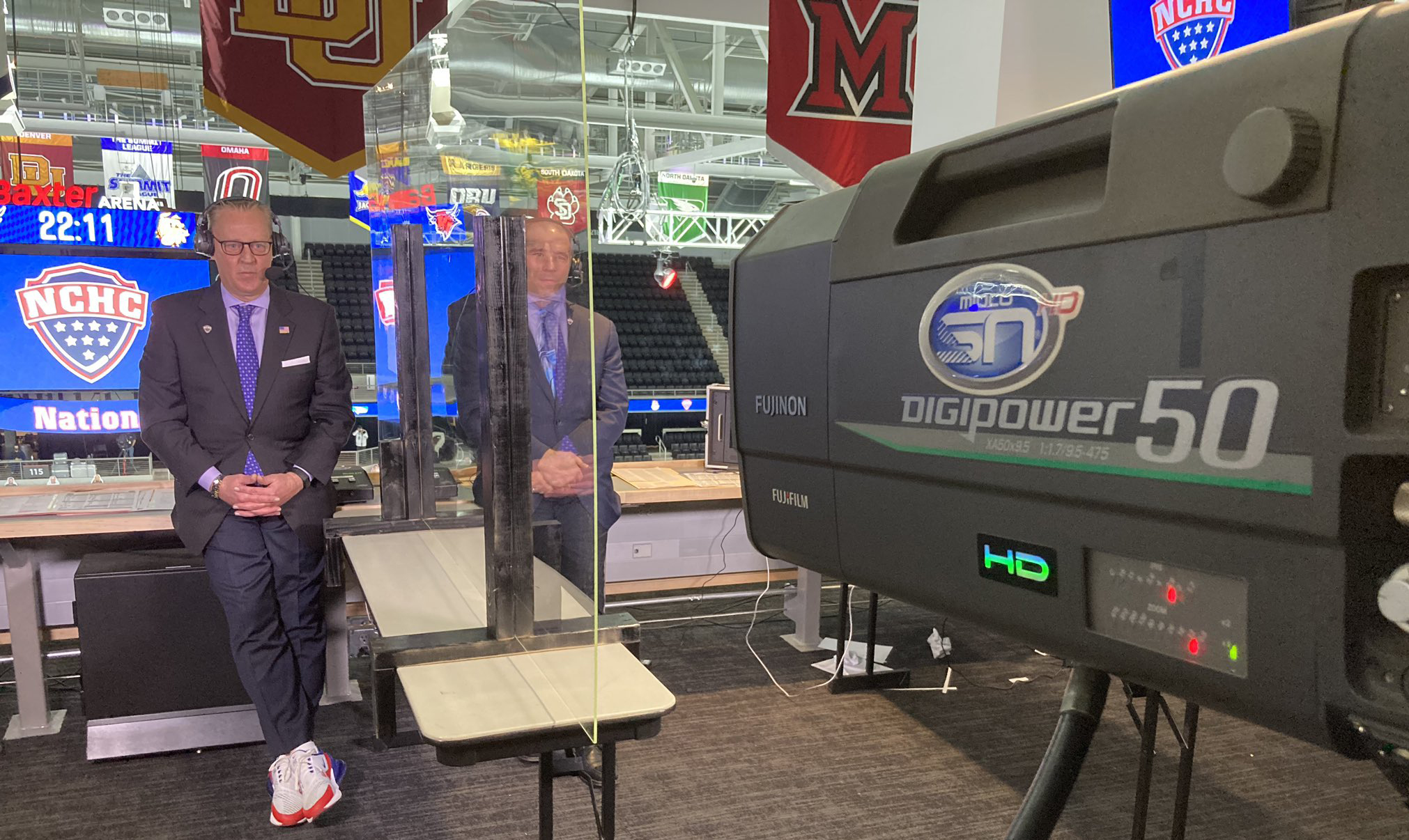
Play-by-play announcer Ben Holden (left) and color analyst Dave Starman were separated by plexiglass in the booth.
“We have the benefit of our centralized production [model], where we utilize all of our own Midco fiber networks throughout the Dakotas and Minnesota to do a REMI [remotely integrated show],” says DeWit. “In the past couple of years, we’ve done some events in Omaha at the Baxter Arena over a co-location fiber, so, when they chose Omaha, we knew we had the infrastructure in place to make it work.”
Centralized/REMI production is nothing new to MidcoSN, which has produced its regional sports events remotely for several years. For the NCHC Pod, the RSN’s centralized-production (CP) vehicle allowed production teams in Sioux Falls, SD; Grand Forks, ND; and Fargo, ND, to handle the bulk of the production, with a limited crew onsite in Omaha to execute the hockey productions. MidcoSN transmitted the camera feeds and comms from Omaha via 1-gig pipe using JPEG2000 compression.
Only five camera operators, an engineer, a TOC, and two announcers (UND talent Alex Heinert and Jake Brandt; a handful of freelance announcers rotated through the three weeks) were onsite at the hockey games to manage the coverage. All other aspects of the broadcast were handled remotely by MidcoSN: replay and graphics operators, audio, stats, TD, and on-air playout were all located in Sioux Falls. Multiple producers and directors rotated games from Sioux Falls, Grand Forks and Fargo. By the end, the multisite production team had been producing two or three games a day for three consecutive weeks — a sizable undertaking for any regional sports network.
“The beautiful part of the technology and the CP [model] we’ve rolled out is that we were able to have people in Fargo and Grand Forks and the rest of the production in Sioux Falls,” says DeWit. “I don’t think this would have been possible otherwise.
“Three games were the most we did in a day,” he continues, “because they had to have enough time between games to let the ice freeze again.”
Safety First: Protocols Onsite and at Home
Onsite in Omaha, the limited MidcoSN team followed strict safety protocols outlined by the NCHC. The conference established three tiers for onsite individuals: Tier 1 being athletes, coaches, and officials; Tier 2, broadcasters; and Tier 3, additional support personnel. The NCHC also provided an app that required all onsite personnel to check in each day and report any symptoms. By the end of the Pod, more than 200 athletes had reported zero positive active cases in 21 days.
Since last spring and summer, MidcoSN has followed its own strict safety protocols at its home studios, including social distancing, masking/PPE, and plexiglass dividers between production-crew positions. In all, MidcoSN produced each game with just 17 crew members (on average) for each show.
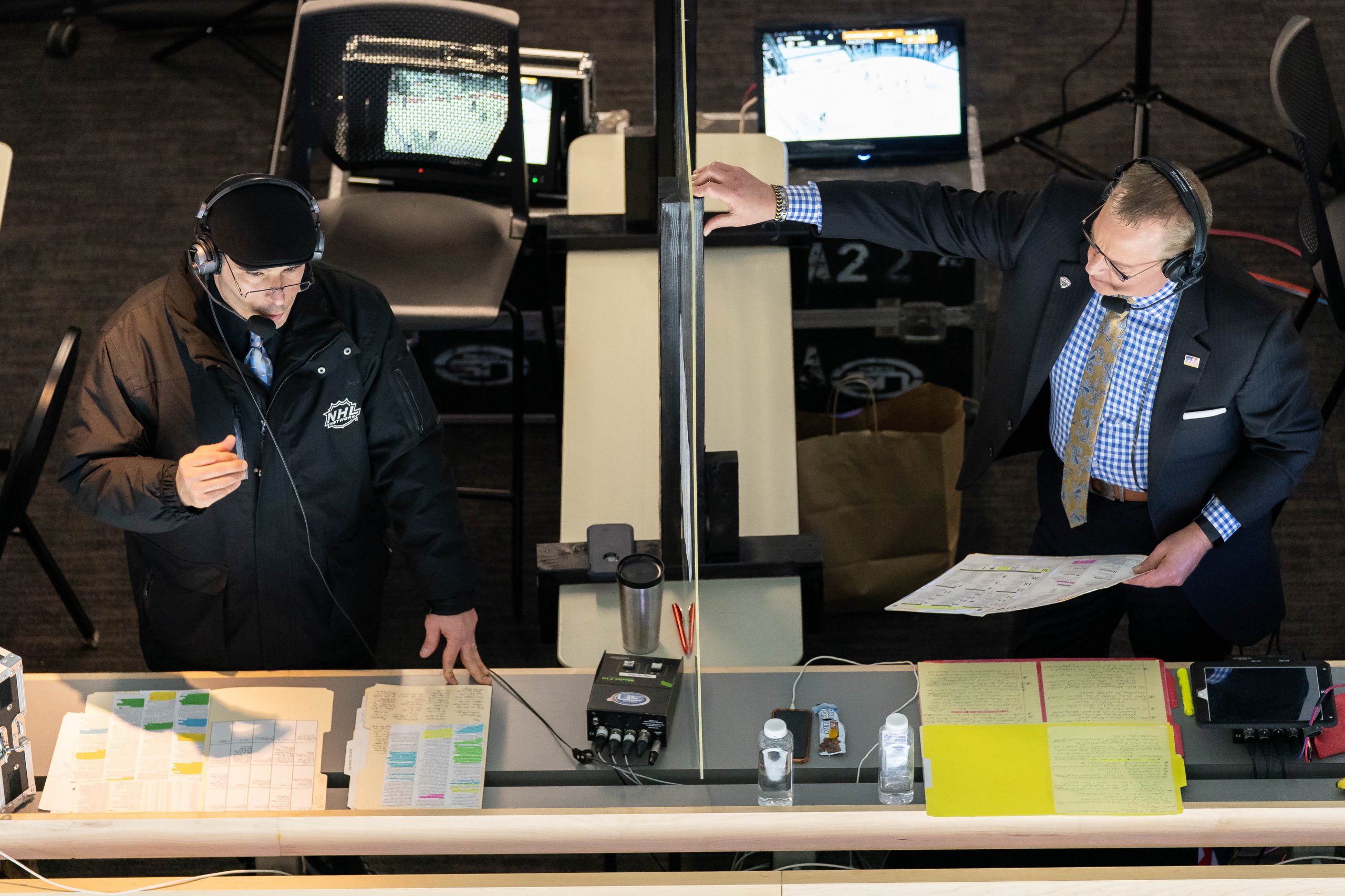
Color analyst Dave Starman (left) and play-by-play announcer Ben Holden were onsite to call the games.
“We had all those in place already, along with our own list of protocols for high school football and other events throughout the fall. So it wasn’t really anything different from what we had been doing — just a lot more games.”
In terms of alterations to the onsite production, MidcoSN was forced to go without its traditional behind-the-glass and behind-the-goal handhelds, which fell into Tier 1 territory. To replace these angles, the network instituted a high-extreme slash position to capture the necessary shots on the ice.
“Given the fact that we were Tier 2 onsite, we knew that, if we had a camera or microphone go down, we wouldn’t be able to just run inside and swap it out,” says MidcoSN Production Technology Manager John Brendle. “We would have to coordinate to carefully get that camera out while maintaining protocols. So there was a lot more coordination on some of the equipment setup than normal, but we were able to account for that and didn’t have any issues.”
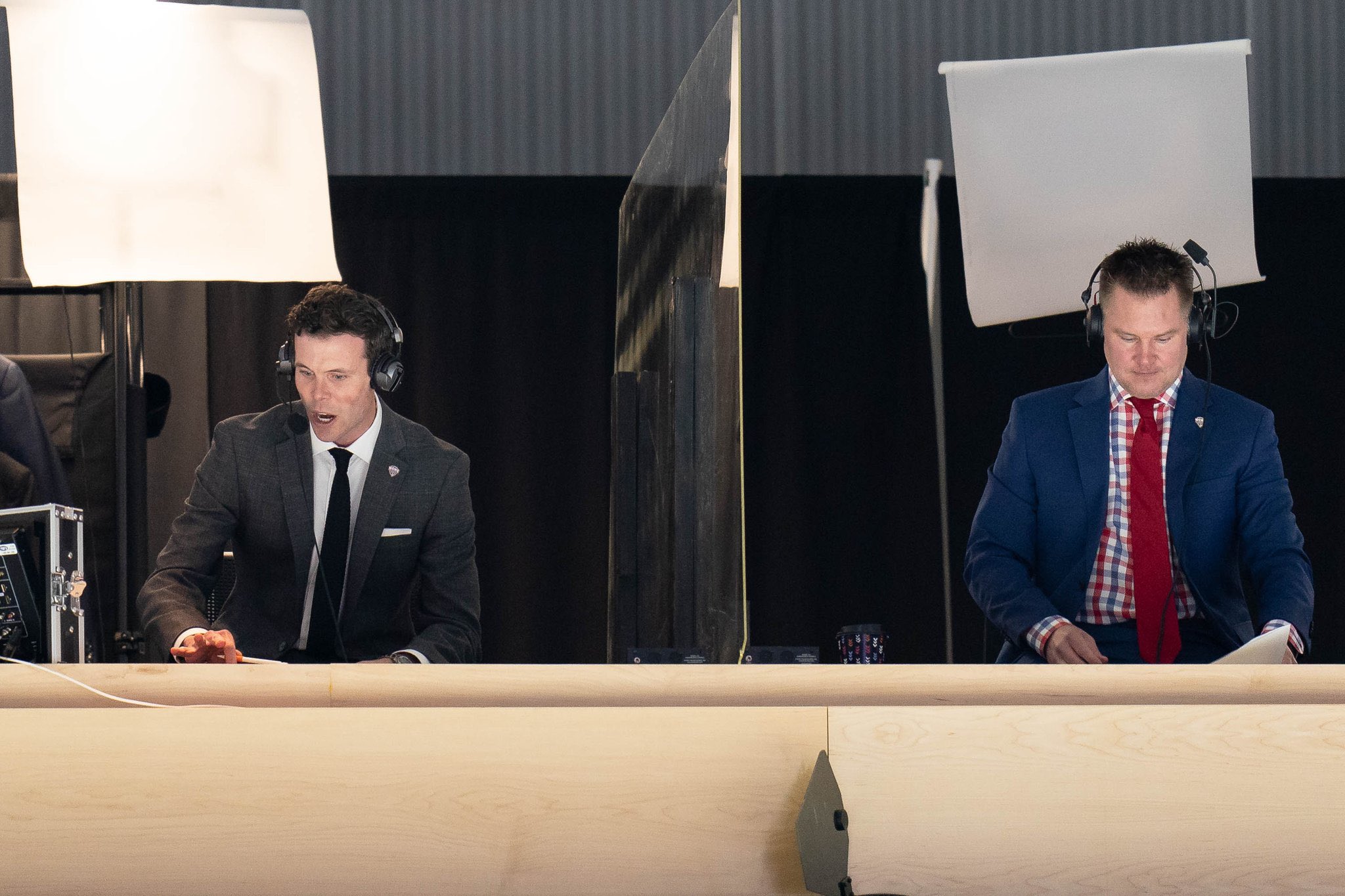
MidcoSN play-by-play announcer Alex Heinert (left) and color analyst Jake Brandt observed social-distancing protocols while calling a game onsite.
In addition, because interviews with coaches were not possible, two comms systems were placed on the ice to allow the producer to communicate with coaches on the ice. MidcoSN set up a remote interview location at each team’s exit location and conducted interviews with coaches and players wearing headsets and covered by a zoomed-in up-camera from the arena.
“It was really amazing when you look at what was done,” says DeWit. “We definitely do other big events every year, but something this long and this intense and this widely seen was brand new for us. It was certainly a pride moment. It was intimidating going into it, but I think most people looking back on it would be extremely proud of the work we did.”
Serving the Hockey World: Outside Entities Increase Distribution Demand
MidcoSN has often distributed its coverage of Upper Midwest sports events to third-party outlets, but this was by far the most significant in recent memory. Radio and television broadcasters from all NCHC schools were looking to pick up the coverage and deliver it to the hometown fans. Although MidcoSN often sends its Summit League Basketball and Missouri Valley Football conference games to ESPN3 and ESPN+, this was among the largest distributions in its history, with all 38 games going to NCHC.tv, to RSNs around the U.S., and to TSN in Canada.
“What was so different about this was the fact that we had so many outside entities wanting to touch the Midco footprint,” says Ron Peterson, senior broadcast engineer, Midco Sports Network. “We had radio, television; we had different broadcasters that all wanted to take [feeds] from us. It wasn’t that we haven’t done those kinds of things before; we just haven’t done it at this kind of scale. We had to make sure we had our logistics in line — not only having the signal come out of Omaha in a timely fashion but also making sure we could distribute that signal out reliably to a number of different outside sources. That was the biggest obstacle.”
DeWit adds, “The reach was continent-wide, and millions of people had the ability to watch our broadcasts, which was very exciting. This was definitely one of the — if not the — biggest shows we have ever done at the network. We’ve heard from all corners of the country — inside and outside the company — just how grateful everybody has been for this. The real credit goes to the engineers because it was [unlike] anything we’ve ever done before and it still turned out almost flawless.”
